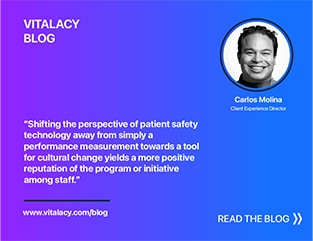
Whether prescribed or purchased as part of a fitness fad, wearable devices are changing the healthcare industry by reducing costs, increasing communication between patients and providers, decreasing recovery times, and even fostering compliance wins in facilities. The International Data Corporation clocked the wearable device industry at 101.9 million units sold in 2016 and estimates the market will more than double by 2020. Here are some reasons why the field is growing so quickly.
Reducing Health Costs With Consumer-Facing Devices
From providers to payers, many in the healthcare industry are standing behind the promise made by consumer wearable devices. Fitness trackers and smart watches can capture in-depth data about a person’s overall well-being, including heart rate, activity levels, oxygen levels, and sleep patterns. All that data makes people more aware of their fitness level and often encourages healthy habits, such as exercise and a well-balanced diet.
Insurance companies buy into the wearable device factor so much, they’re putting money behind it and encouraging employers to do so as well. For example, United Healthcare’s Motion plan allows employees and covered spouses to earn $3 to $4 toward their healthcare savings account daily for meeting walking goals while wearing compatible activity trackers. Under the Affordable Care Act, employers are also allowed to incentivize pedometer or fitness tracker use via rate discounts and gift card awards.
Payers and employers are using wearable devices to gamify fitness lifestyles because individuals who engage regularly in such lifestyles are less likely to develop certain chronic (and expensive) disorders.
Increasing Patient-Provider Communication
While the data from wearable devices is still a contention point in 2018, many experts predict that patient-generated data will become a foundational element of care within the next two years. And that forecast isn’t without support from the past; to see the evolution of this type of data within a healthcare environment, you can look to personal blood glucose monitors.
When glucose monitors first allowed patients to check blood sugars at home, it was a big win for providers trying to educate and encourage diabetic patients on healthy diets and lifestyle choices. But patients still had to record the readings in log books and bring them to physician’s offices for checkups. Today, many monitors come with a variety of technical integration tools — and some are even wireless — so patients can integrate smartphones and apps or send their physician regular electronic data regarding blood sugar levels. Providers can respond faster to concerning trends in the data and provide feedback in real time to patients, which leads to better outcomes in many cases. Wearable devices can provide the same benefits for patients with other concerns, including high blood pressure and heart disease.
Decreasing Recovery Times After Injuries or Procedures
Tech companies are also developing wearable tech in niche spaces. Smart shoes, for example, can track the performance of runners and athletes to help them perfect form and pace while protecting their bodies and health. Numerous devices are in development or hitting the market that help with specific needs after an injury or surgical procedure.
Often, these devices take benefits previously limited to clinical settings and make them available in the home. One example is the RAPAEL Smart Glove, which measures range of motion in the hand using Bluetooth sensors. It then uses that data to create appropriate exercise schedules and movements to help individuals regain motion in the hand following surgery, stroke, or other conditions or injuries.
Wearable devices targeting a specific need are reducing the amount of time a patient has to spend in a clinical environment. They may also improve patient compliance with treatment recommendations. Even the RAPAEL Smart Glove includes gamified software that rewards points for certain activities.
Driving Compliance Wins With Providers
Patients aren’t the only individuals donning wearable devices to improve healthcare outcomes. From surgical assistance devices to Vitalacy’s own handwashing compliance system, technology helps providers ensure proper procedures are followed to reduce infections and other poor outcomes.
Wearable devices are definitely disrupting healthcare, but most experts seem to see the disruption as a positive one. Technology, which encourages patients to engage in healthy lifestyles, participate in their treatment plan and communicate with providers, and improves both recovery times and the rate of poor outcomes, is only likely to increase within the industry in the future.
Sarah Stasik is a full-time freelancer with a background in healthcare revenue cycle management.
Request a demo of Vitalacy’s Automated Hand Hygiene Monitoring Solution today!
Author
-

Vitalacy is committed to reducing patient harm in healthcare through better hand hygiene and patient safety solutions. Bluetooth-enabled smart sensors and wearables help improve outcomes and Leapfrog Hospital Safety Grades.



